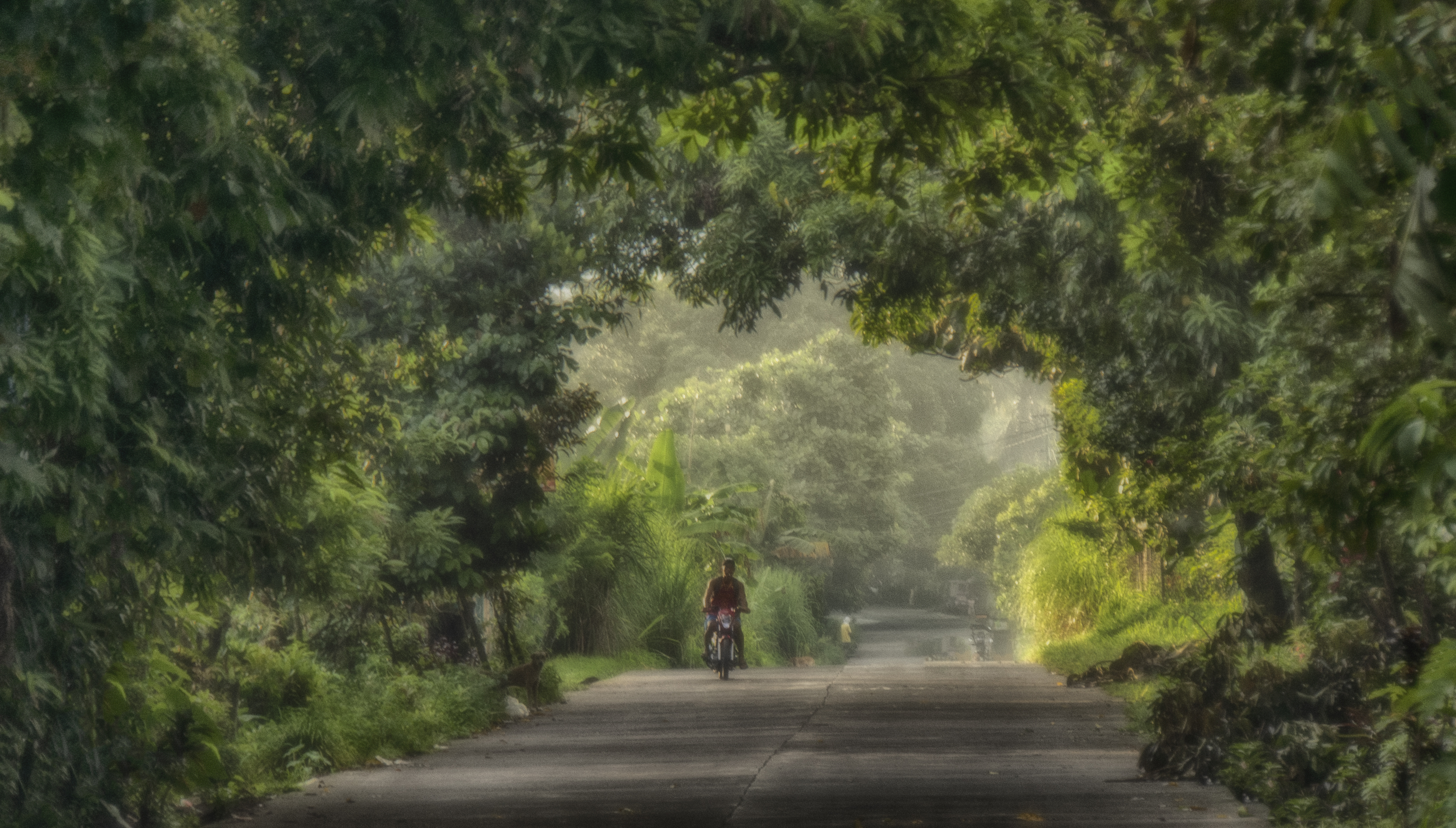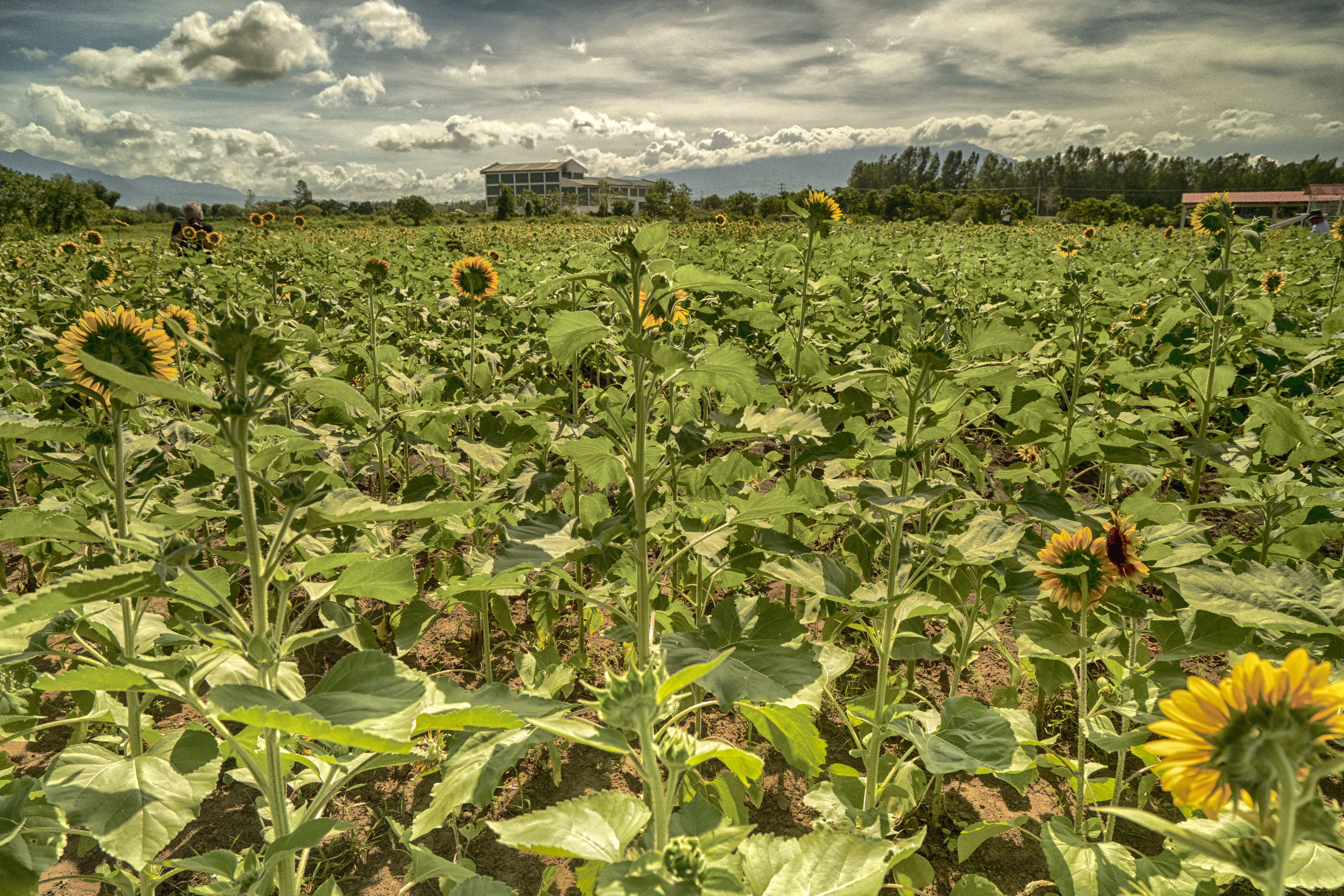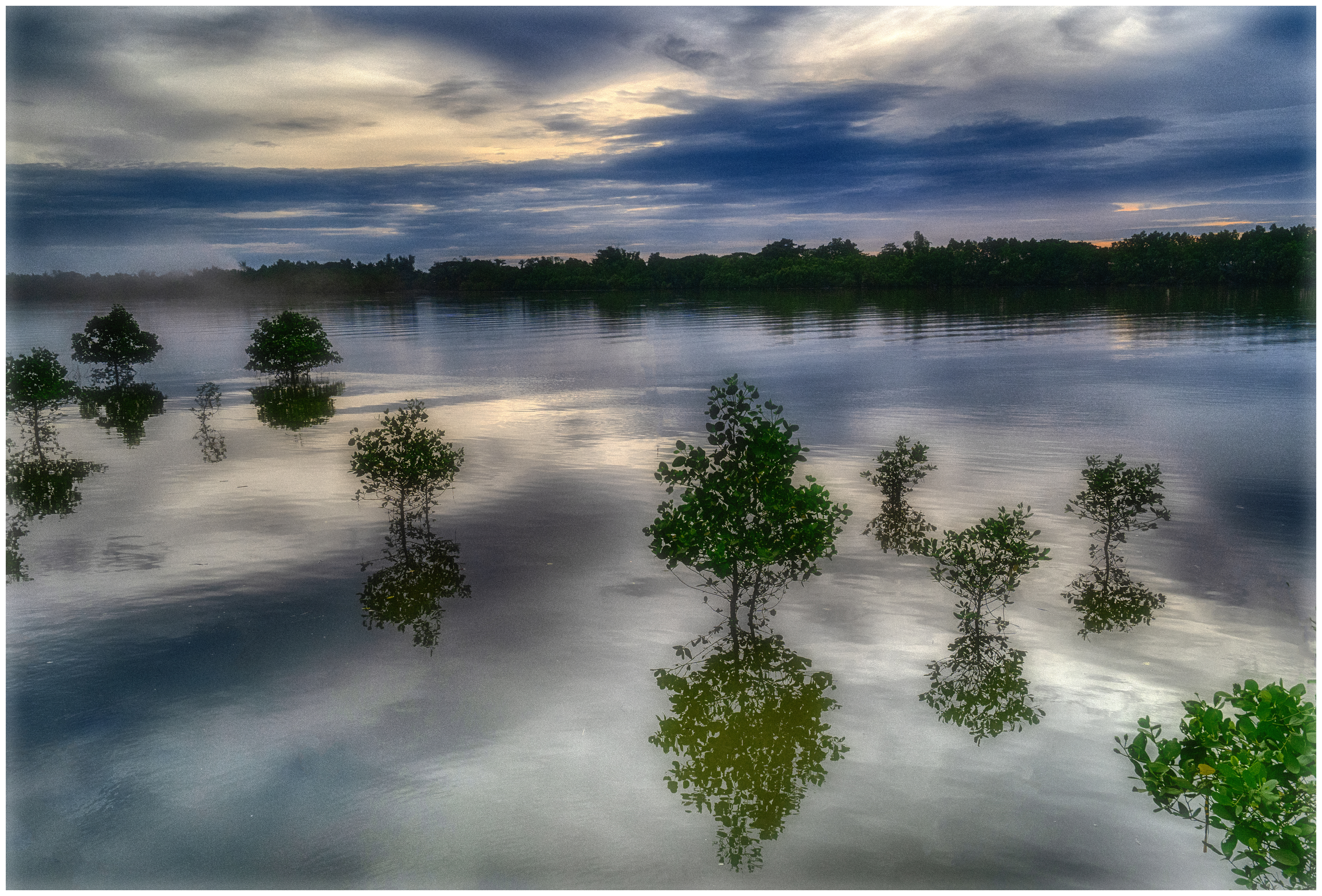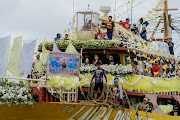CLICK ON PHOTO TO OPEN GALLERY
Bredco Boat
One of many boats used to reclaim the sea to create the Bredco Seaport Complex in Bacolod City. The seaport serves passenger fast crafts and roll-on-roll-off vessels plying the Negros-Panay route.
“Photography is an art to express various emotions,” quips Nicky Ledesma
when asked about his craft. His journey as a visual artist began as a
hobby back in the 70s when his photography mentor, former Negros
Occidental Governor Rafael “Lito” Coscolluella, introduced him to the
works of Ansel Adams, a celebrated American landscape photographer and
conservationist whose works are described as tributes to nature’s
monuments. Adams, together with notable American portrait photographer,
Fred Archer, developed a “Zone System” technique for black and white
photography, which allowed the photographer to create expressive images
through a sea of tones or a jungle of textures. Ledesma reminisces,
“This technique created a huge impact as I got to understand the beauty
of the different zones which I utilized on my photos.”
While
taking up Marketing at the University of St. La Salle in Bacolod, he
honed his skills by covering school activities. Ledesma says that his
first exposure to photography came with “challenges of having to develop
and print my own pictures.” His perseverance paid off at the 1979
Cultural Days Photography Contest of his alma mater where he competed
against Arts and Mass Communication students who had the advantage of
photography classes. He was bestowed with four of the top five awards,
including the First Prize with his work, Hands I.
Balaring Boats
The coastal barangay of Balaring is the seafood capital of Silay. Located 20 minutes from the city plaza, it is dotted with seafood restaurants where fishermen sell their catch to the delight of customers mostly from Bacolod.
Concepcion Road
The road from the city center of Talisay to Barangay Concepcion, leading further up to resorts like Campuestohan.
Lakawon
A 90-minute highway drive from Bacolod takes you to the powder white sand island of Lakawon off Cadiz City. Both sunrise and sunset can be seen here as the island is like a large sandbar, measuring less than a hundred meters from one side to the other.
In the early 80s, Ledesma became a pioneer member of the Camera Club of
Negros (CCN), which was established to showcase the beauty of both
Negros Occidental and Oriental. “Today,” he shares, “it also aims to
develop photographers and the youth with free workshops to entice them
to take up the hobby in the purest form through digital single-lens
reflex (DSLR) cameras and not only cellphone cameras.” Through the
years, Ledesma contributed to its major endeavors including the creation
of the portfolio of the House of Negros (now the Association of Negros
Producers). He recalls, “It was roughly done at the onset as we lacked
the resources, like studio lights and equipment, but it was a start.”
Having been President of CCN in 1993 and in 2008, he considers the trust
of his fellow photographers as one of the best recognitions he has
received, aside from the top prize for the Landscape Category during the
Silay City Photography Contest in 2008.
His works featuring
scenic spots in Negros, along with those of other CCN members, were
exhibited in partnership with the Department of Tourism at both the old
and new airports of Bacolod. As a conservationist, he remains proud of
CCN’s first project aimed at awakening social awareness: the
documentation of illegal logging activities in Don Salvador Benedicto, a
mountain municipality 52 kilometers east of Bacolod City, also known as
the “Summer Capital of Negros Occidental.” The intriguing photographs
from this collaborative endeavor saw print in local, national, and
international newspapers.
Sunflowers
Grown in Oisca farm in Bago City. Oisca is also a training center for rice farmers as well as a silkworm farm.
Lakawon 2
The Tawhai floating bar anchored off Lakawon Island in Cadiz City. This Instagrammable attraction has dominated social media posts bringing millennials from other parts of the country to the island.
Patag’s Golden Hour
This mountain community in Silay City offers a magnificent “golden hour”. Also called “magic hour”, it comes just before the sun sets and immediately after the sun rises. It can be easily missed and is coveted by professional photographers for its perfect light to capture stunning photos.
Balaring Resto
Fisherfolk in Barangay Balaring, Silay City, bring in fresh catch of the day to supply restaurants on the waterfront. This sustains a thriving economic ecosystem relying mostly, if not solely, on the riches of the Visayan sea.
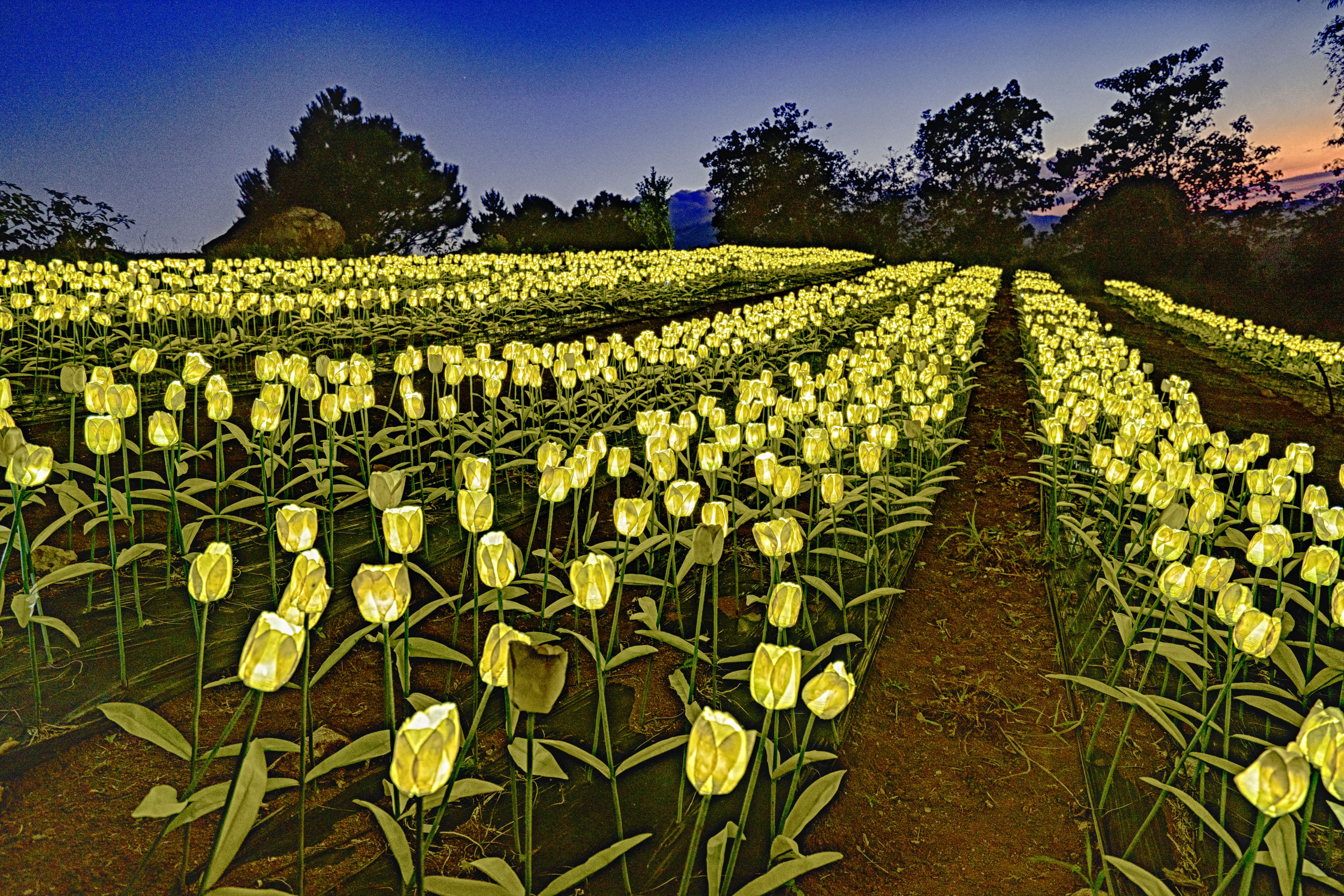
At Manggapuri Villas in Don Salvador Benedicto town, tulips are lit using pin lights, which creates a nice illusion of colors and brightness at night time. This was taken shortly after dusk so the colors of the horizon at the back can be seen.
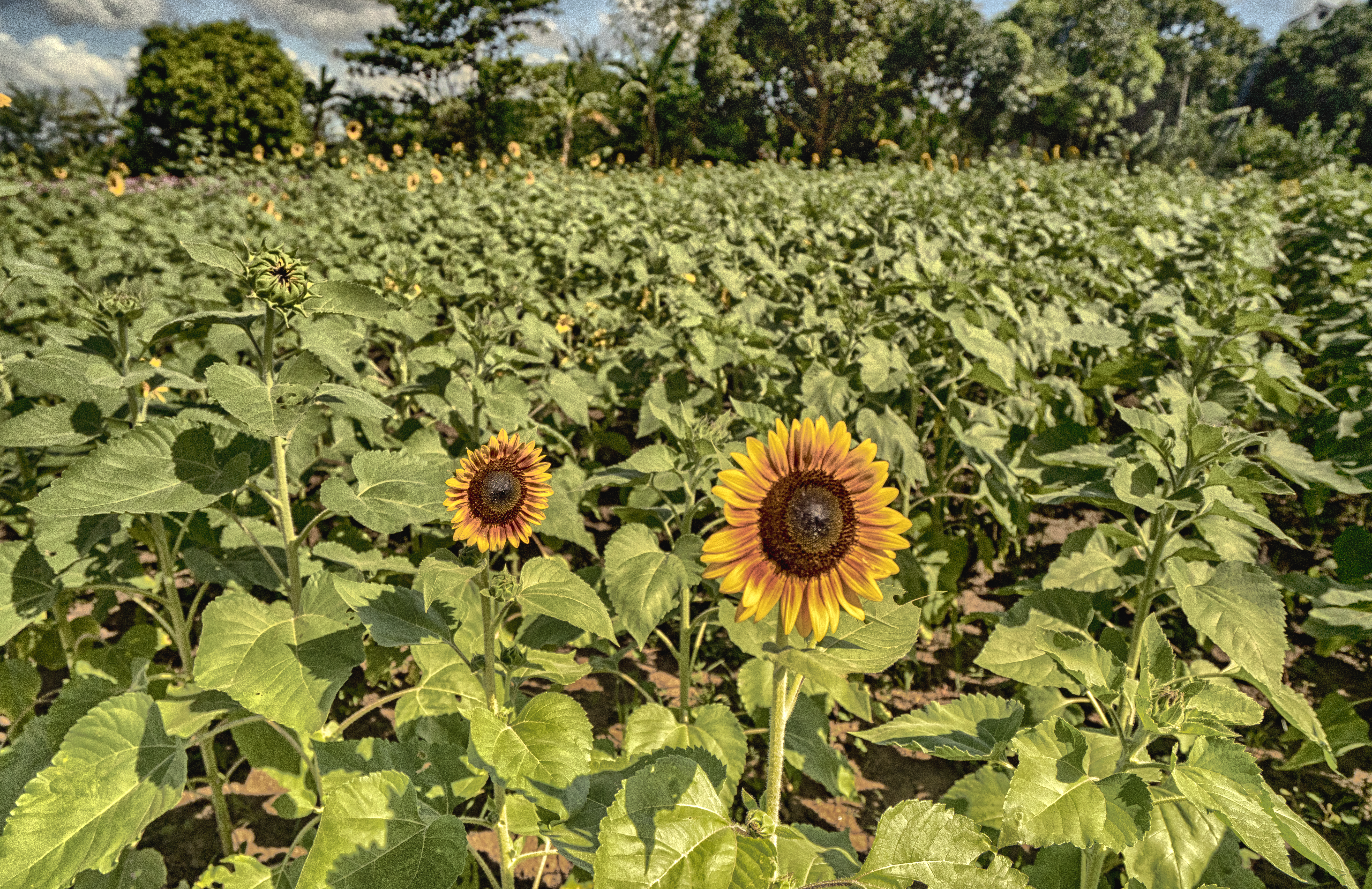 Sunflowers
SunflowersSunflowers taken at daytime at OISCA Farm, in Abuanan, Bago City, just south of Bacolod. Hundreds have visited farm since it opened three years ago.
Mount Canlaon
This photo of the crater taken at the boundary between La Castellana Municipality in Negros Occidental and Canlaon City in Negros Oriental. On a clear day the crater can be seen with a zoom lens (70-200).

At Stonepeak Cafe in the mountain municipality of Don Salvador Benedicto, we waited until the clouds cleared at 2am to shoot the Milky Way. With the stone structures of the cafe it looked magical. Venus can be seen on top shining brightly.
Mangroves of Bago City
The mangroves are beside Bantayan Park. They were planted purposely to prevent erosion. Photo was taken just before dusk. It makes strolling along Bantayan Park relaxing with the cool wind and view. The trees help prevent soil erosion and provide a natural nesting habitat for fish and other sea animals laying eggs.
Malatan-og Falls, Don Salvador Benedicto
Photo was taken at Kusinata, a restaurant that employs Indigenous People like the Ata. Kusinata is where the best view of Malatan-og can be seen. It is also the take-off point to the falls.

E.B. Magalona Coastline
The coastline is now accessible by good roads through Barangay Tuburan. Small eateries serving seafood have mushroomed within the area. It’s the new “go to” place in E.B. Magalona. At the coastline children play to savor the fresh air.
Acacias of Bagacay
The Acacia trees in Bagacay, Silay City, resemble those of Africa. Thanks to the Montinola, Jalandoni, and Javellana families who have preserved the trees. They are an attraction beside the highway near the airport.

Apo Island is a marine reserve off Dumaguete City in Negros Oriental. It is a diver’s paradise, one of the best in the country. The rock formations were shaped many years ago from a volcanic eruption.

Abuanan, Bago City.
Early morning dawn photo with pastel like colors. This minimalist photo creates a tranquil and relaxed feel.
The passion for nature conservation is evident not only in Ledesma’s works but also in his words. When asked about the natural treasures of Negros, he becomes both pragmatic and idealistic: “Our environment needs the most protection. Trees to protect us from floods, to shade us, and to create beautiful landscapes that only Mother Nature can offer. Ours are God-given and not manmade. If our mountains continue to be bald because of illegal logging, what will protect us from floods?” He is hopeful that his art will help open the eyes of his fellow Negrenses and move them to help protect the region’s natural resources for future generations to enjoy.
Heritage houses are also a passion for Ledesma who grew up in Silay City, touted as the “Paris of Negros”. He describes his hometown as “a small city filled with so much culture and heritage.” Thanks to Republic Act 10066, The National Cultural Heritage Act, ancestral homes in Silay, such as the Balay Negrense and the Maria Ledesma Golez heritage house, are protected and preserved as cultural properties of the country. It is no wonder that Ledesma’s work frequently features the architectural treasures of his hometown. He discloses, “The beauty of our landscapes and our cultural heritage reflected in these colonial homes have influenced my subject preferences. However, while we have managed to protect our heritage houses, our environment should be protected as well.” Ledesma’s dream is to shoot all the heritage houses in monochrome for a photobook for Silay.
Going beyond the influence of Ansel Adams, Ledesma’s images are an amalgam of nature and humanity. He explains, “While landscapes have been my favorite subject, my photography has evolved in connecting emotions to the environment.” His photograph, entitled “Bredco Boat,” is evocative of both the melancholia of a fishing vessel cast ashore and the threatening menace of dark clouds looming over calm seas. It captures the beauty of nature and the reality of human nature in one moment. Of his images, he imparts, “nature and humanity need to come together for our sceneries and landscapes to survive. The human element bridges that gap.”
Text by: Michelle Josephine G. Rivera
Photos by: Nicky Ledesma



